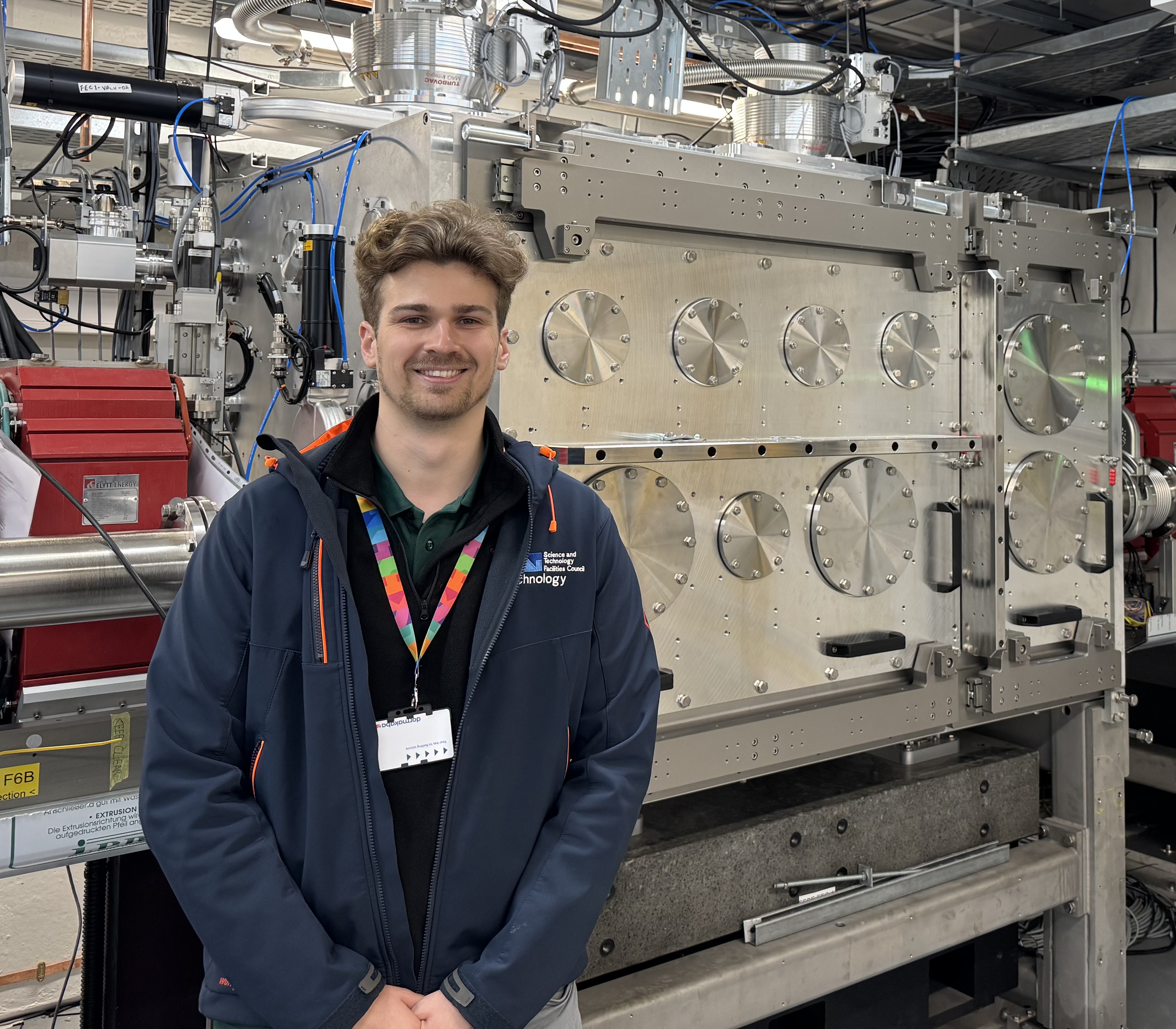 Tim inside the FEBE Hutch in front of the experimental chamber🔧Why design engineering?
Tim inside the FEBE Hutch in front of the experimental chamber🔧Why design engineering?
My interest in engineering started young – I was obsessed with taking things apart and trying to put them back together again (much to my parents’ dismay!). This early curiosity about how and why things work led me to a career in engineering.
While studying for my integrated master's at the University of Birmingham, I completed a Year in Industry at Caterpillar. That involved testing, validation, and working on system development projects – I even managed to get a patent out!
📍What brought you to Daresbury Laboratory?
I grew up near STFC’s Rutherford Appleton Laboratory and remember touring the site during school open days. An opportunity to move somewhere new was a bonus!
⚡What are you working on now?
So far, I’ve been focused on CLARA (the Compact Linear Accelerator for Research and Applications). This has involved the design work for the installation of a 120 TW femtosecond laser and the necessary beam transport into the facility’s new user experiment area, known as FEBE or Full Energy Beam Exploitation. This laser light will soon be used along with the electron beam for a wide variety of experiments, including novel plasma-based acceleration.
🏆 Biggest achievement so far?
Designing and delivering the supporting infrastructure for the FEBE laser was a major success for me. I have always been interested in optics and lighting, which has made working with optomechanical systems in science-based engineering particularly fulfilling. My next challenge is designing equipment for beam diagnostics.
💕What do you enjoy most?
Everybody is friendly and helpful, which has been great since moving to a new organisation and a whole new industry. As someone early in their career, it has been great that my work has taken projects from concept design all the way through to installation.
There are many routes into science and engineering at STFC. Keep an eye on the
Industrial and Summer Placement Programme for future opportunities.
This science highlight was originally shared on our LinkedIn page.
Read more science highlights
